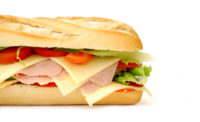Nearly 2 million metric tons of non-dairy creamers were consumed in 2018, totaling a market value worth $2.3 billion, according to a study released by Future Market Insights (FMI), Valley Cottage, N.Y.
Fat-free, plant-based and organic are being received positively by consumers, the study says, encouraging manufacturers to experiment.
The consumption of non-dairy creamer is expected to grow at 5% year-over-year in 2019. Key driving factors include:
- Increasing prevalence of lactose-intolerance condition across the globe.
- Growing use of non-dairy creamers as a substitute for milk or cream.
- Non-dairy products' labeling lacks FDA classification.
"The market for dairy products witnessed a strong competition from non-dairy alternatives in the past decade against the backdrop of increasing population of lactose intolerants. Consumer sentiments for health have led them to distinguish between their purchase of dairy and non-dairy products. In addition, non-dairy brands are leveraging the health consciousness of consumers to communicate the health benefits of non-dairy products. However, without FDA classification, consumers will remain bemused during their purchase, thereby impacting the future market growth," says FMI.
Powdered non-dairy creamers top selling category
The FMI study finds that powdered non-dairy creamer consumption remained higher in 2018 and accounted for over 78% of the total non-dairy creamer consumption. While the status-quo is expected to continue in the future, demand for liquid non-dairy creamer is expected to grow at 5% in 2019.
Powdered non-dairy creamer is said to be the first entrant in the non-dairy creamer market, and its popularity continues to rise. Non-dairy creamer manufacturers have introduced several packaging and preservation technology advances to increase the shelf life and deliver a high-quality product.
Conventional non-dairy creamers continue to hold higher market share
As per FMI valuation, the non-dairy creamer market is witnessing a gradual penetration of the “organic trend.” The study finds that consumption of conventional non-dairy creamers equaled nearly 94% of demand in 2018.
The projected rise in the consumption of organic non-dairy creamers can be attributed to consumer sentiments for natural or organic ingredients in non-dairy products. However, a strong brand image created by non-dairy creamer manufacturers will continue to fuel the consumption of conventional non-dairy creamers in the future.
The non-dairy creamer marketplace has witnessed expanding product portfolio, wherein manufacturers are shifting to introduce flavored non-dairy creamers. The business strategy is led by manufacturers' awareness regarding increasing consumer palate for different flavors in non-dairy products.
The study also finds that French vanilla, chocolate, coconut, hazelnut and other flavors collectively accounted for over 55% of the total non-dairy creamer consumption in 2018. Original/unflavored non-dairy creamers accounted for the remaining 45% of the consumption.
Fat-free non-dairy creamers gaining popularity
The non-dairy creamer manufacturers offer product variants apart from original non-dairy creamers, such as light and fat-free variants. This study shows that light and fat-free non-dairy creamers will collectively account for over two-fifths of the overall non-dairy creamer consumption in 2019. Consumption of the latter will grow over 5% in 2019, implying increasing consumer preference for fat-free food products.
While the popularity of new variants is increasing, consumption of non-dairy creamers with the original nutritional value will continue to account for a considerable share in the market.
Consumer preference for plant-based, non-dairy creamers on the rise
The study reveals increasing demand for plant-based products in the non-dairy creamer market. According to the study, consumption of plant-based non-dairy creamers (almond, coconut, soy, hemp and cashew) will grow at nearly 5% year-over-year in 2019. Vegetable oil-based, non-dairy creamers have remained a traditional offering by manufacturers, and account for a hefty bulk of the overall consumption.
The food and beverage processing industry remains a prominent end-user of non-dairy creamers. As per the study, over 45% of all the non-dairy creamers are expected to be consumed in foods and beverages. Buoyancy in food and beverage processing will continue to ensure significant consumption of non-dairy creamers in the future, especially in beverage mixes and coffee mixes.
Household/retail and Horeca/foodservice industries collectively accounted for the remaining non-dairy creamer consumption.
Direct distribution most preferred channel
The study opines that non-dairy creamers will be distributed directly as compared to other sales channels. However, distribution through indirect sales channel, especially hypermarkets/supermarkets and online retail will witness a steady rise in the coming years.
Demand for non-dairy creamers in bulk packaging is expected to remain higher as compared to the products available in retail stores in sachets, pouches, bags, canisters, plastic jars and bottles.
The study opines significant consumption of non-dairy creamers in Europe, followed by North America. Collectively, they accounted for nearly half the non-dairy creamer consumption.
The FMI report tracks the non-dairy creamer market for the period 2018-2028. According to the report, the non-dairy creamer market is projected to grow at 4.8% volume CAGR through 2028.


